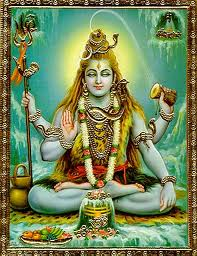As teachers, we know Yoga originated in India and is thousands of years old. Yoga helps one achieve relaxation of body, mind, and soul. Yoga is often practiced to reach states of harmony and enlightenment through meditation. The word “Yoga” comes from the sacred language of scholars (Sanskrit). Yoga has the same root word as the phrase “to tie.” In a figurative sense, Yoga actually means to harness the soul to the body.
Some forms of Yoga are only focused on meditation, while others concentrate on stress relief, asceticism, and physical exercises. Today, people from around the world understand Yoga from the slim-fit approach combined with breathing and calming techniques. This type of Yoga is called Hatha Yoga, which translates to powerful physical form of Yoga. “Ha” means sun, “tha” means moon; thus, Hatha yoga is the harmonization of the two basic, but powerful, energies in our solar system.
According to Hatha Yoga Pradipika, the most famous Hatha yoga text, there are many Yoga positions (asanas). Only Shiva, the legendary founder of Hatha yoga, knows all of them. Popular is the division into 12 regular postures from which the 84 main asanas develop. Gradually the positive effects of Yoga have been discovered. With Hatha Yoga, unlike with gymnastics, the muscles are not strained heavily, but only slightly stretched. The Yoga exercises for stress relief consist of the three following typical characteristics.
Asana
These movements govern how the body reacts during physical Yoga practice. Through these exercises, the muscle tissues are improved, tensions are reduced, and full body awareness is increased. The weaker areas of the body are strengthened, and the practice of asana promotes the interaction of body, mind, soul and breath. Through a physically intensive position, inner serenity is sought and found.
Pranayama
Pranayama is the series of breathing exercises that help with natural absorption of energy (prana). This is an extremely essential part of Yoga, as stress and poor posture causes most people to breathe shallow. Yoga curbs the deep-breathing mechanism; thus, it fuels the body with more oxygen. Conscious inhalation of air also brings about a state of inner peace and complete satisfaction.
Relaxation
Although meditation is very important, most people would be better off to work on fundamental relaxation techniques first. As children, we learn to walk before running. Paulji often says, “It is much easier to meditate by relaxing first.” Relaxation is an area of Yoga, which deals with techniques of deep tranquilization, to reduce stress, strengthen the immune system, and to feel inwardly calm and balanced. Yoga includes much more than just a series of body and breathing exercises. Yogic relaxation should become a habit and can be best described as a lifestyle or a state of mind.
The secret and success of Yoga is that it is solely about personal progress, and not about competing with others. The fabulous thing about Yoga is that it can increase physical fitness, muscle strength, and flexibility, while one can set individual goals. Some find more body awareness through Yoga, train their mobility, learn how to cope with stress, and encounter a sense of serene satisfaction. Yoga to keep your cool is the way to peace and harmony.
© Copyright 2011 – Aura Wellness Center – Publications Division
See our testimonials to find out what our graduates have to say about our selection of distance learning yoga instructor certification programs.
If you are teaching a yoga class, a yoga school manager, blogger, e-zine, or website publisher, and are in need of quality content, please feel free to use my blog entries (articles). Please be sure to reprint each article, as is. Namaste!


Leave A Comment
You must be logged in to post a comment.